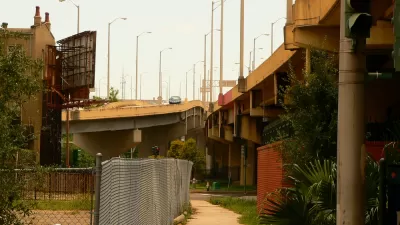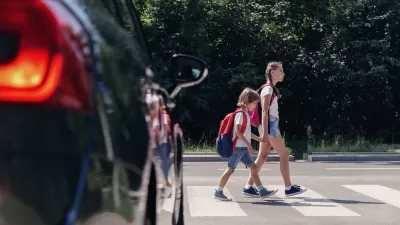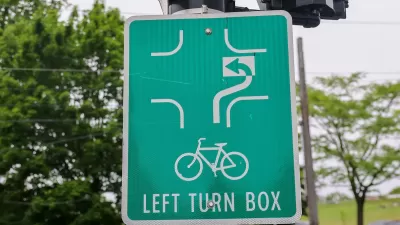Although some cities are in favor of removing or reducing urban freeways in favor of more walkable spaces, guidelines like the 11-year-old MUTCD still encourage a 'throughput at all costs' mentality.

As the movement to remove urban freeways and reconnect neighborhoods gains strength, writes Scott Beyer, Northern Virginia's National Landing provides a sample of the conflict between freeway removal advocates and the state and federal programs that perpetuate freeway building and expansion. "The local business improvement district (BID) wants to convert U.S. Route 1, an elevated highway that divides National Landing’s downtown, into a walkable boulevard with narrower lanes and slower car speeds." But state officials want to keep the road at its current width, citing concerns "that narrowing Route 1 would divert too much traffic to local roads."
In Boston, mobility advocates are calling for "an at-grade reconstruction that is less disruptive than the elevated highway" of the city's Interstate 90 viaduct, but are facing similar opposition from the state's department of transportation, which, according to reports, "may even make the elevated viaduct taller and wider."
The conflict stems in part from the seldom-updated, federal Manual on Uniform Traffic Control Devices (MUTCD), whose guidelines "dictate lane widths, shoulder widths and curve radii, and are written with automobile speed in mind." Because "[h]ighway engineers tend to use a 'level of service' (LOS) metric to determine whether a road has adequate capacity," typical designs focus on prioritizing vehicle speed with little regard to pedestrian or cyclist safety or convenience.
With local residents and businesses on board with less car-centric retrofits of urban freeways, it's time that state and federal DOTs understand "it may be unwise for them to force this 'throughput at all costs' vision onto the urban parts of state and federal routes" when cities are realizing the "tremendous economic and cultural value that is diminished" by reducing roads to simply corridors for moving traffic as efficiently as possible.
FULL STORY: Will States and the Feds Let Cities Tame Urban Highways?

Alabama: Trump Terminates Settlements for Black Communities Harmed By Raw Sewage
Trump deemed the landmark civil rights agreement “illegal DEI and environmental justice policy.”

Planetizen Federal Action Tracker
A weekly monitor of how Trump’s orders and actions are impacting planners and planning in America.

The 120 Year Old Tiny Home Villages That Sheltered San Francisco’s Earthquake Refugees
More than a century ago, San Francisco mobilized to house thousands of residents displaced by the 1906 earthquake. Could their strategy offer a model for the present?

In Both Crashes and Crime, Public Transportation is Far Safer than Driving
Contrary to popular assumptions, public transportation has far lower crash and crime rates than automobile travel. For safer communities, improve and encourage transit travel.

Report: Zoning Reforms Should Complement Nashville’s Ambitious Transit Plan
Without reform, restrictive zoning codes will limit the impact of the city’s planned transit expansion and could exclude some of the residents who depend on transit the most.

Judge Orders Release of Frozen IRA, IIJA Funding
The decision is a victory for environmental groups who charged that freezing funds for critical infrastructure and disaster response programs caused “real and irreparable harm” to communities.
Urban Design for Planners 1: Software Tools
This six-course series explores essential urban design concepts using open source software and equips planners with the tools they need to participate fully in the urban design process.
Planning for Universal Design
Learn the tools for implementing Universal Design in planning regulations.
Clanton & Associates, Inc.
Jessamine County Fiscal Court
Institute for Housing and Urban Development Studies (IHS)
City of Grandview
Harvard GSD Executive Education
Toledo-Lucas County Plan Commissions
Salt Lake City
NYU Wagner Graduate School of Public Service





























